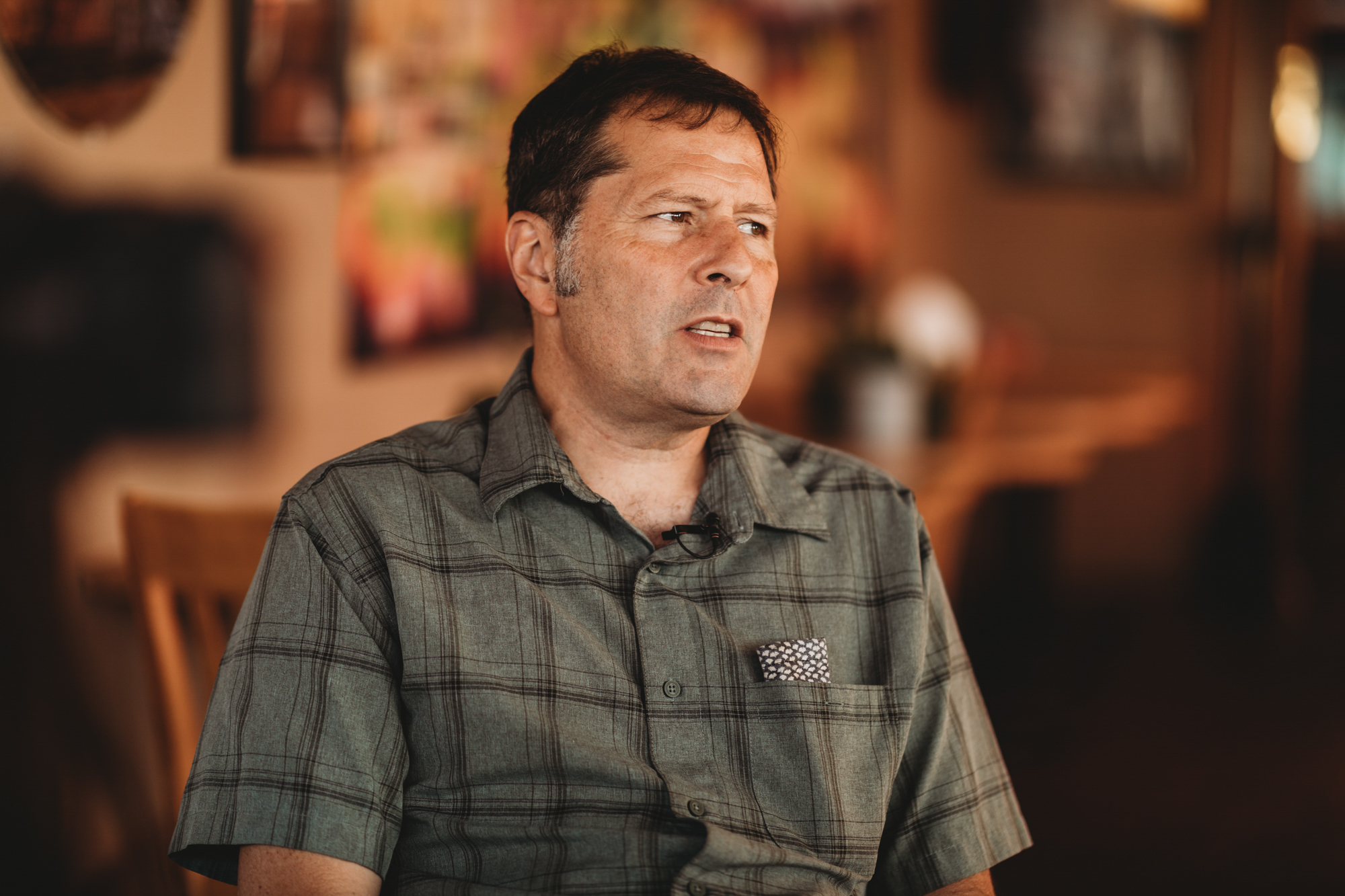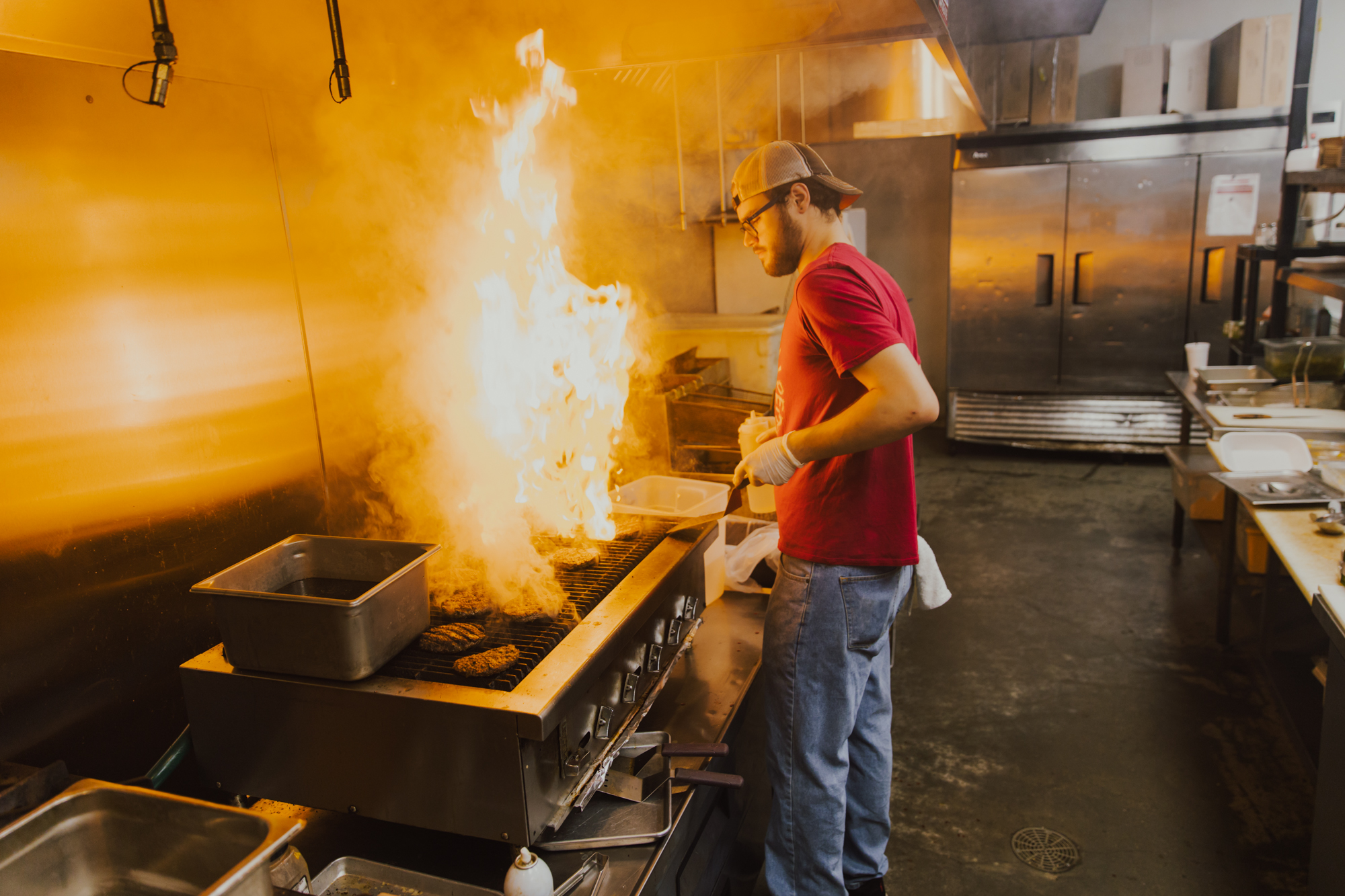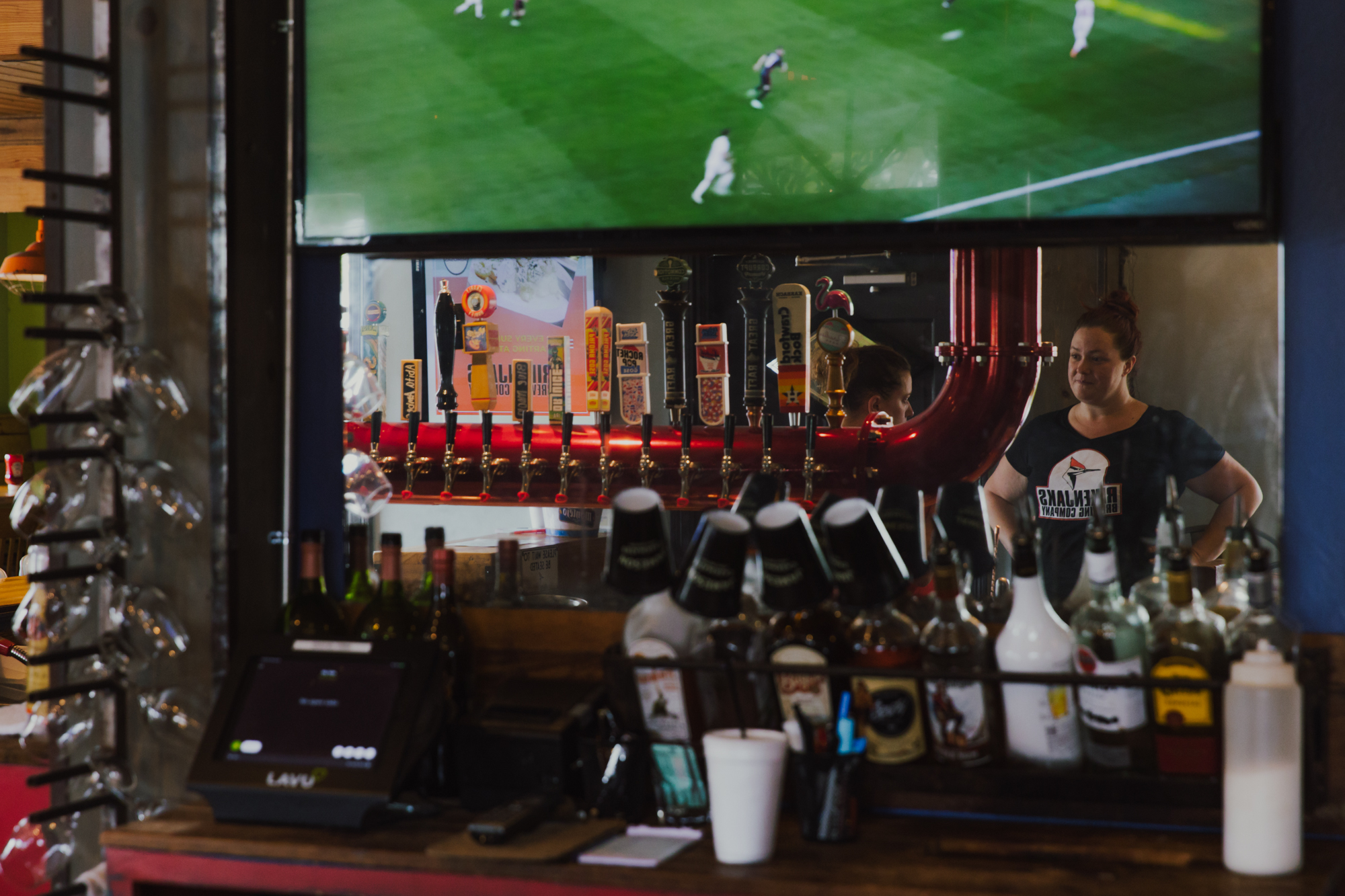Though many industries are gradually recovering, COVID-19’s impact on small businesses and restaurants lingers, a reminder of the pandemic’s effect.
As the country wrestles with how to best balance public safety with personal risk, stimulus with unemployment and federal governance with local intervention, restaurants and small businesses continue to hang on and stay open.
The food service industry, which employs more than 12.5 million employees, has faced some of the most acute impacts of COVID-19 spread and lockdowns. Social distancing, risks of eating indoors and new curfews meant restaurants and their employees were forced to adapt to stay afloat.
Keeping their doors open has required government support for many restaurants. On March 11, the $28.6 billion Restaurant Revitalization Fund was created out of the American Rescue Plan, offering restaurants that applied anywhere from $1,000 to $10 million.
But by the time funding reached restaurant owners in April, more than 8 million employees had already been laid off or furloughed, with the industry having lost $280 billion as a whole, according to the National Restaurant Association.
Because they were laid off due to COVID-19, many employees were able to receive extended unemployment benefits from the American Rescue Plan, which boosted existing unemployment benefits by $300 per week and extended the termination date to Sept. 6.
However, in over half of the country, Republican lawmakers prematurely ended these federal benefits, claiming that they discouraged people from returning to the workforce. These claims continue to be debated by politicians, business owners and economists.
Unemployment aside, trends in the food and service industries look promising as states continue to recover. But business recovery will depend on how states decide to reopen.
Chefs prepare meals for customers ordering lunch at Tomasita’s in Santa Fe, New Mexico. (Maxwell Shavers/News21)
Chefs hand cooked meals to waiters through a window in the kitchen of Tomasita’s in Santa Fe, New Mexico. (Maxwell Shavers/News 21)
Most of the employees at Tomasita’s in Santa Fe, New Mexico, have been working throughout the pandemic. They had no choice due to not receiving government help. (Jessica Ruiz/News21)
George Gundrey, owner of Tomasita’s in Santa Fe, Tomasita’s in Albuquerque and Atrisco Cafe in Santa Fe, all in New Mexico, employs more than 200 staff members. But at the height of the COVID-19 pandemic, Gundrey’s staff dropped from 220 to 60.
As of July 1, New Mexico had removed all COVID-19 capacity restrictions, joining most states in fully reopening, though the state’s leisure and hospitality industry was one of the hardest hit in the nation.
New Mexico is one of the top three most impoverished states in the country, with 1 in 5 residents living below the poverty line. The state also currently leads the country in unemployment at 7.9%.
For Gundrey, adapting means juggling limited staff and supplies. In order to keep up with customer demands, all three restaurants have been forced to close a few days a week.
Supply chain issues also remain a constant obstacle for Gundrey. Early in the pandemic, food supply chains were hit hard as producers and distributors attempted to navigate rapidly changing demands while keeping employees safe.
“It’s so freaking stressful. I’m ready to quit right now,” Gundrey said.

George Gundrey is the owner of Tomasita’s in Albuquerque, and Tomasita’s and Atrisco Cafe in Santa Fe, in New Mexico. (Jessica Ruiz/News21)
Supply chains have improved since the onset of the pandemic, but some suppliers necessary to Gundrey’s restaurant remain impacted by the lingering effects of COVID-19.
Joe Phy works as chief operating officer at Roadrunner Food Bank in Albuquerque, New Mexico. Though he has not spent much time in food service, his food bank began working more with food distributors like Shamrock Foods during COVID-19.
“All the food distributors that really relied on the food service sector didn’t have a customer,” Phy said. “So … a lot of those entities were the ones that were competing for the USDA contracts, because they were factoring in labor for their warehouse staff, for their management, for their drivers, and then cost of food and cost of boxes and packing materials, et cetera.”
Phy thinks these suppliers may have had trouble recovering their restaurant customer base as states opened back up. Additionally, truck driver shortages and retention difficulties — which experts claim existed pre-pandemic — continue to be a problem for businesses everywhere.
“We always have had a shortage. There are people who are not getting into that business as much as they were,” Phy said.
For businesses in Lake Charles, Louisiana, COVID-19 faded into the background after two hurricanes, a city-wide freeze and massive flooding all struck in just 15 months. (Ian S. Brundige/News21)
COVID-19 caused challenges for restaurant and business owners across the country. But for businesses in Lake Charles, Louisiana, that included five federally declared disasters, all within 15 months.
Five months after the pandemic began, just as restrictions started loosening, Hurricane Laura struck. A month later, Hurricane Delta, the fourth Category Hurricane to hit Louisiana in 2020. In February pipes froze over during the Polar Vortex throughout the South.
And in May its recovery was again delayed when bayous overflowed and the city flooded.
“Those five different issues that have happened over the last 15 to 16 months have really tested the grit and determination and resilience of our community, of our people. And I’m not trying to be dramatic. It’s been a tough place to live those 16 months,” said Kyle Edmiston, chief operating officer of the Lake Charles/Southwest Louisiana Convention & Visitors Bureau.
Jay Ecker, owner of the Lake Charles bar and grill Rikenjaks, also made it through the year of emergencies.


Left: A chef cooks burgers at Rikenjaks Brewing Company in Lake Charles, Louisiana. Right: Rikenjaks Brewing Company has had difficulty hiring workers over the past 1 1/2 years. “I think we’ve had maybe four or five new hires for just this year, and (only) two of them actually worked out,” said manager in training Chelle Stokes. (Maxwell Shavers/News21)
Ecker, along with his business partners, also owns Panorama Music House, a bar and concert venue in the historic downtown area. But after Hurricane Laura last August, the building was ripped to shreds.
“It’s still kind of a mess around here. It doesn’t always look this messy, but I’m hoping that so much stuff will come back new and improved … like a rebirth,” Ecker said.
As Lake Charles returns to normal, Ecker and his staff continue to face difficulties hiring new employees. Chelle Stokes works at Rikenjaks as the kitchen manager in training and has noticed a sharp decline in kitchen staff applications.
“Normally there’s always applications on file in the restaurant industry — there’s usually always something. It’s not the case,” Stokes said. “If you catch an application, it’s far and few between, and they don’t stay long.”
Other Lake Charles restaurants share the same hiring issues. For Jerry LeBlanc, owner of Big Daddy’s Sports Grill and Kat Daddy’s Drive-Thru Kitchen, keeping and finding staff has been an ongoing challenge.
“I think some of it was the expanded unemployment, you know, encouraging people to stay off work,” said Dawn Eccles, manager at Big Daddy’s. “There are people that were impacted that couldn’t go back to work. But there’s plenty of jobs, people that could work.”
Jerry LeBlanc and restaurant patrons eat and converse at Big Daddy’s Sports Grill in Lake Charles, Louisiana. (Ian S. Brundige/News21)
In order to receive unemployment benefits in states like New Mexico, recipients must prove they are actively applying for jobs.
Wayne Moore, director of bistro operations at Lescombes Family Vineyards in New Mexico, scrambled to find new staff.
“Half of the applications we get literally give you a phone number and contact info … that just doesn’t work,” Moore said.
For Lake Charles residents, the return to work remains complicated by multiple factors. Alongside COVID-19, continued damage from natural disasters displaced many potential employees. General lack of livable housing means some service workers deal with longer commutes.
“I’ve been away from home ever since the storm, and the way things are going, you know, I may (not) be home a little longer,” said Donna Young, a cook at Big Daddy’s for 12 years.
Young has been living with her son and his family in Sulphur, Louisiana, 30 minutes away.
“That’s making me have to spend more money to go and find places to live. And that’s money that I really don’t have,” Young said.
While discord around the American Rescue Plan’s federal unemployment extension continues, some small business owners struggle to maintain their staff. Both Ecker and LeBlanc have been forced to step in and fill whatever positions are needed to keep their businesses, employees and communities afloat.
“We look out for each other and we respect each other,” Ecker said. “In times that we really need each other, we come through.”
Ecker, LeBlanc and Gundrey all received loans that helped them through the worst of the shutdowns. While only restaurants could apply for the Restaurant Revitalization Fund in the spring, the CARES Act offered loans to any small businesses needing support earlier in the pandemic.
These loans, known as the Paycheck Protection Program, ended on May 31, after approving almost 12 million loans and offering nearly $800 billion, according to the U.S. Small Business Administration.
As economic experts and analysts work to predict the lasting impacts of COVID-19, everyday workers continue to rebuild, day by day.
“We still persevere,” Eccles said. “Things may get tough. We always continue to fight back, stay strong and keep a good attitude.”
LISTEN Big Daddy’s manager, Dawn Eccles, in her house that was badly damaged by hurricane Laura in 2020. (Maxwell Shavers/News21)
Businesses outside of the food and service industry, like hotels, took advantage of PPP as well. By September 2020, the hotel and lodging industry had lost nearly 2 million employees.
Globally, supply chains have been affected as well, with shortages in computer chips, vehicles and lumber.
While COVID-19 crushed many industries, trends in economic recovery are improving. But for hard-hit industries like food and service, recovery will be slow and difficult.
The food and service industry has already started to recover, but sales remain lower than pre-COVID-19. According to the National Restaurant Association, 65% of restaurant owners report lower sales than before COVID-19.
Hotel occupancy has returned to about 65% of pre-COVID-19 levels, but a full recovery will most likely take a few years, according to experts.
Many industries, especially within food and service, have reported staffing difficulties despite states reopening. While some point to the enhanced unemployment benefits as an incentive to stay out of work, others are not so sure.
Lake Charles, for example, is not only dealing with COVID-19, but massive disaster recovery.
“I hear a lot of business owners complain that people don’t want to work because of federal assistance or whatever … And that may be part of the problem,” Ecker said. “But I believe here we’re in a unique situation where people’s whole life has been changed.”
In areas unaffected by natural disasters, the debate around unemployment wages on. One study by Indeed suggests that while unemployment benefits may be delaying a return to the workforce, COVID-19 safety concerns and spouse employment status take precedence. Only 10% of people surveyed expressed urgency in finding work, however.
For a state like New Mexico, where unemployment has historically been an issue, these trends have greatly affected the hospitality industry.
Carol Wight is the CEO for the New Mexico Restaurant Association. As New Mexico restaurants have slowly opened back up, Wight has witnessed massive labor shortages.
“I talked to somebody at one of our casinos yesterday, and he said, ‘Carol, we need 150 people. And every week we get three people,’” Wight said.
But while new COVID-19 variants emerge and states move toward recovery, getting people back to work and businesses back to normal will take time.
“I think we’re trying to move forward. I think it’s going to be a lot longer than we thought,” LeBlanc said.